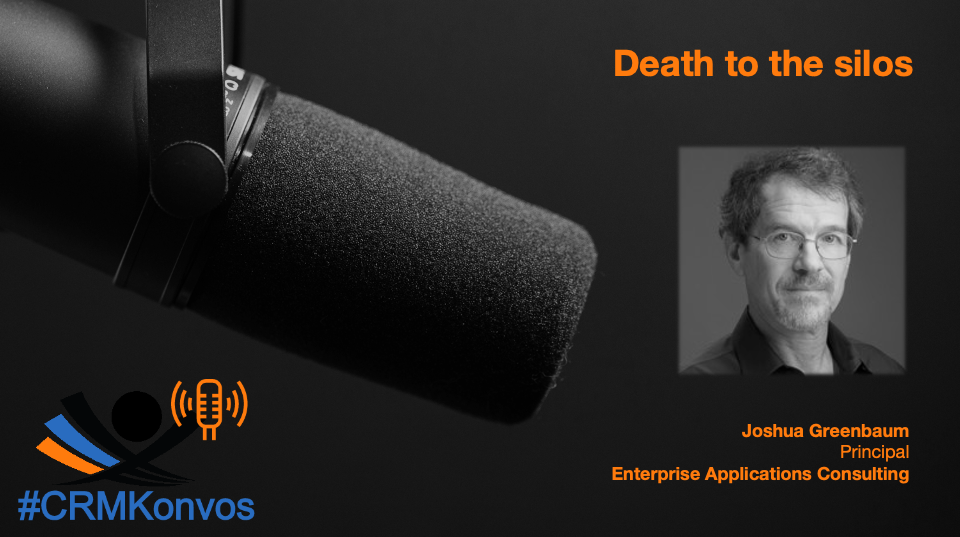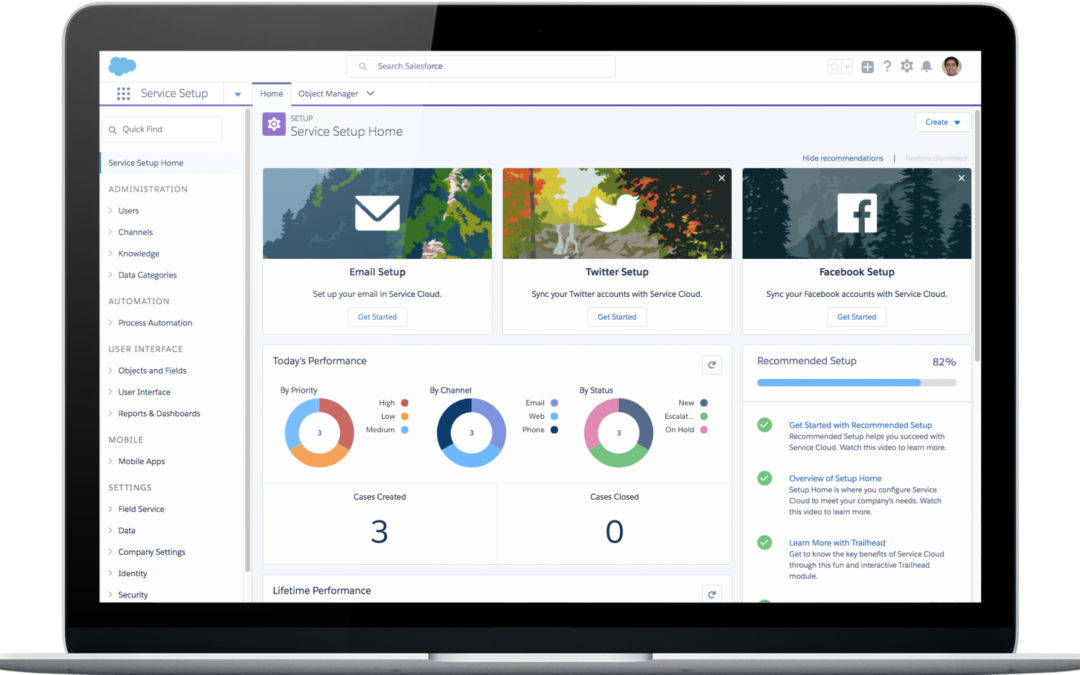
by twieberneit | Dec 21, 2021 | Blog, CRMKonvos |
The word is that it takes two to Tango. It turns out that sometimes it needs three! I will not spoil the excitement by naming who they are, though. Why do we have silos in enterprise software? How to remove them? Do they even need to be removed? Does throwing more software at a software problem help? Aren’t the problems a software problem after all? If more or different software helps, what type of software can or should be used? Or are corporate silos even a Wallstreet problem? Great questions and even better answers by Joshua Greenbaum in this #CRMKonvo. This one got even bigger than I expected. But then, Josh thinks in big lines. And he has wits, a lot of wits. He did not disappoint, really! Apart from a lot of knowledge, that is. Listen in to our CRMKonvo. I can also highly recommend to read Josh’s article “Death to all Silos, with Aphorisms”. It is worthwhile, promised! Death to All Silos, With...

by twieberneit | Mar 2, 2020 | Analysis, Blog |
End of January Zoho held its 2020 Zoho Days, an analyst summit, which I was happy to attend, along with more than 60 colleagues, as the only analyst from Germany, as it seems. Sadly, it took me quite a while to complete this – Zoho deserves a faster commentare. But hey, let’s look forward and get rolling. Zoho is a privately owned enterprise software company that has quietly evolved from a small software company in 1996 to an ambitious global player that serves the SMB- and enterprise CRM market with cloud applications. The company has a set of 45+ business apps with more than 50 million users, 10 data centres and counting, and is available in 180 countries. The company is profitable and maintained a CAGR of more than 30 percent over the past five years. But why quietly? Because Zoho managed its growth pretty unusually (almost) fully organically with only very minor acquisitions. Crunchbase lists one. Following this unique approach, which defies the traditional law of going big fast, the company managed to build a solid platform with a unified data model that allows it to crank out amazing software at an incredible speed, and with a track record of growth that is well in the double digits. Zoho offers a suite of business, collaboration, and productivity applications, supported by development environments, services and infrastructure. Besides CRM, the applications cover a good part of the value chain, including some ERP type of applications, like order management, warehouse management, or billing and project management, HR and accounting. These apps are built upon a services oriented soft- and hardware stack...

by twieberneit | Jan 15, 2019 | Blog |
The suite is back. I have said and written that a good number of times in the past few years. And that is a good thing (that the suite is back, not that I said it, of course), because one of the major challenges with a best of breed approach is integration. The suite is back, but it is in an incarnation that vastly differs from what we knew about suites back in the times before cloud computing and Salesforce brought back a supremacy of best of breed over the suite. Integrating different pieces of software from different vendors into one coherent whole is easily accounting for one third to one half of project budgets. And this part of the overall cost for implementing new software is often plaid down by best of breed vendors. Which is not a crime, especially if the benefits of the best of breed software outweigh the cost of integration. However. Often it does not. And not openly addressing cost of integration backfires. Always. Believe me. If you research my background well enough you will find out why you should. Little hint: I am not only writing about things. Another strong argument in favor of the suite is the platform war that is currently going on. Why? Simply, because a platform is not only a technical platform. It is more. A platform consists of mainly four pieces: a technical platform the ability of turning data into insight, an ecosystem, and productivity support. And, very importantly, a necessary capability that is provided by the technical platform is integration. Some other aspects include the provision of...

by twieberneit | Aug 1, 2017 | Analysis, Blog |
On July 27, 2017 Salesforce announced the availability of an update to their customer service platform Service Cloud. According to Keith Pearce, VP Marketing, Service Cloud, differentiation in customer service is no more a topic within industries, but across industries. Today, customer service in companies competes against the impression gained in another industry, telco vs. banking, vs airline, vs. … you get the picture. Consequently, winning organizations are concentrating on three areas: platform productivity mobile However, this focus can potentially slow down these organizations because they normally come with trade-offs, like scalability vs. speed of deployment, ease of use vs. complete information, or mobility for customers vs. mobility for agents. Salesforce wants to address these trade-offs with this release by making the solution very easy to set up, easier to customize and enhance, easier to use and finally by offering a new mobile app for agents and supervisors. There is a scripted set up that lets admins deploy a usable application in a short time; Salesforce speaks of less than one day. A component library helps in easily adding relevant functionality via drag and drop in a simple application builder. Of course there are additional components and applications available via the AppExchange market place. Agents shall be made more productive by a clean Kanban-style UI, a tool called Community360 that helps in surfacing community content that a user reviewed before logging an incident, a federated search that is capable of searching across open search compatible providers, and the ability for agents to script tasks. Lastly, there is a new mobile app for agents and supervisors. Here is the complete...

by twieberneit | Jul 28, 2017 | Blog |
For a while now I am contemplating about why companies choose one custserv solution over another. After all the market is pretty crowded. Vendors have a hard time to differentiate themselves. Just looking at G2Crowd one finds 88 Help Desk Solutions. Larger organizations are likely to be influenced by Gartner’s Magic Quadrant on Customer Engagement Centers or the Forrester Wave on Customer Service Solutions. Smaller organizations are probably looking more at the new breed of peer-to-peer review sites, like the aforementioned G2Crowd or GetApp, TrustRadius, Capterra and others. Many companies conduct research and establish an RFP process to determine the best fit; some see a bottom-up approach from team level to corporation. A kind of ‘shadow IT’ emerges to solve a team’s particular problem. This solution over time could get corporate blessing and may even become the main solution. A clear and reliable roadmap is mandatory for all vendors, so no difference here. Same for share of mind – this has become table stakes. But what is it that makes one vendor win over another? Are there patterns? To get more insight I asked some smart people who stay unnamed here – but you know who you are! So What Are Contributing Factors? The good news is that there seem to be only a few factors. Based on the discussions I can roughly group them into six categories. Here they are, in no particular order: A particular feature is needed or desired Suite- vs. Best-of-Breed thinking Size of the customer organization Relationship building Referrals Departmental adoption Of course they are not mutually exclusive. Let me briefly dive into each...






